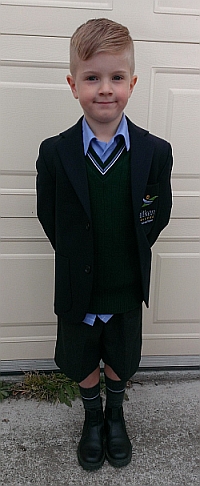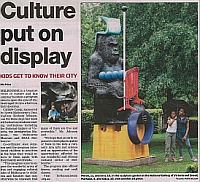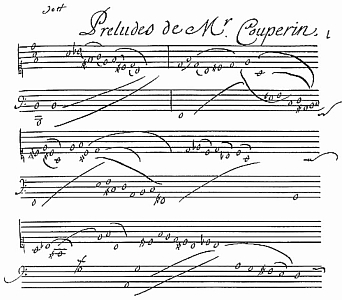Autumn 2015
| Editorial
What happens in school holidays? |
Editorial I offer something from “my” world, a concert where cultures met in a new way: Read the full review classicmelbourne.com.au/reviews/aco-four-seasons/ or even better, listen to some of the music. Suzanne Yanko, Editor The Transform 2015 Conference Many of you will know that on the third weekend of February I attended the first “Transform” conference, held at Pallotti College at Millgrove. “Transform” is a ministry initiative with young adults to which Mark the Evangelist has contributed both valuable funds and a good deal of my time over the last 12 months. It is a joint initiative of MtE, Brunswick UC, Wesley UC and the Church of all Nations in Carlton. Our first step was to fund several young people from Melbourne to attend the Sydney School of Discipleship in July last year, wanting to create some enthusiasm for developing a similar ministry in Melbourne. This led to a monthly series of gatherings towards the end of last year, and the slightly risky venture of the recent conference itself. In the end – after a nervous last week before registrations closed – there were 23 people at the conference, including several not-so-young leaders and teachers. The young adults attending came from all over Melbourne, with a number coming from each of MtE, Brunswick, Wesley, Mountview UCAs, as well as a few “singles” from other congregations, and one from Sydney! The purpose of the ministry is to provide teaching of the Christian faith through solid material from good teachers and the creation of a space for exploration and asking questions. The theme was “Love, actually”, picking up on the Valentine’s Day timing and taking a lead from a delightfully sugary movie with the same title from a decade or so ago. Principal input came from Geoff Thompson, who teaches theology at the CTM, and Sally Douglas, UCA minister at Richmond. Several electives were offered on Saturday afternoon on the themes of love in the movies (led by Ian Ferguson), love and civil action (Adrian Greenwood), and love and prayer (Joan Wright Howie). There was also much relaxing and friend making over the weekend! The session I thought most positive – or indicative of the usefulness of the venture – was the question-time at the end, when many took the opportunity to ask the kinds of questions we very often want to ask but never seem to have the opportunity or courage to raise. It was great to hear serious question and serious answers exchanged. We have not yet determined the next steps with Transform, but the weekend seems to have worked well in gelling together a group of people with enthusiasm for the project and commitment to moving ahead together. The Synod’s Board of Mission and Resourcing (BOMAR) has agreed to provide some support funding for the next five years, which will assist in advertising and keeping participation costs for the younger participants – many of whom are still studying – as low as possible. With prayer and hard work, I think we might have reason to think that Transform will have a very positive effect on the lives and faith of adults in the Uniting Church, and beyond. The Phoenix
Over two years the Chinese sculptor, Xu Bing, gathered trash and debris from construction sites across the rapidly changing urban landscape of Beijing, and transformed them into this ambitious project, two six-ton, 100 foot sculptures. The birds were installed in the Cathedral last January and were suspended from 140 feet of aluminium trusses using over 30 hoists. They remained there for a year. The recycled materials that compose Phoenix are fitting reminders of its symbolism of revival and renewal. Legend has it that the Phoenix sacrificed itself to put out a great fire, losing all its feathers. Then in homage to its brave act, every kind of bird gave a feather to the Phoenix, resulting in its beautiful plumage. Wherever it is found, the phoenix is beneficent and life-giving; in many cultures it symbolizes rebirth and resurrection. It appears in Ancient Egypt, Ancient Rome, Ancient China, and in the ancient third century Midrash (Jewish rabbinic stories told to explain the Hebrew Scriptures). Early Church fathers utilized the image of the Phoenix to reinforce teachings about the Resurrection of Jesus. Year of the Goat
There is no such confusion among the Chinese, due to the fact that one single Chinese character “羊” (which is an encompassing word without specifying the different types) is used to depict the year. If one wishes to refer specifically to “goat” in Chinese, the Chinese character “山” (means mountain) is added in front of the word “羊” and becomes “山羊” in written Chinese. The same principle applies to “Sheep” and “Ram”, using an additional Chines character in front of the word “羊” to differentiate the different types. With the “lost in translation” and the confusion that resulted, I opted not to google but asked around my Chinese friends. They all went for “goat” out of gut instincts. Archie offered one plausible explanation that in ancient Chinese paintings (including those New Year paintings), “goat(s)” and not “sheep” are depicted in drawings. It does not really matter whether it is called the Year of the “Goat”, “Sheep” or “Ram”. Chinese New Year is the time for celebrations that close family members would have dinner together and to share good wishes with each other. With the more hectic schedules and the many distractions these days, our family has done away with many of the traditional rituals. However we would still like to carry on some customs, such as the preparation of the special dishes associated with Chinese New Year, putting up some decorations in red in the house and giving red packets (with money inside) to the younger ones in the family or those of close friends, all to signal the bringing of good fortunes in the coming year. Have a safe, happy and prosperous Year of the Goat. Change…
Despite the let-down of not being taught to write on the first day, Sam is loving school and we are enjoying seeing the rapid changes in his knowledge and maturity. He is attending Aitken College, a Uniting Church School in Greenvale – only 10 minutes from home. The school has a fantastic reputation in our area and we are so pleased that we are able to have Sam educated at a school where Christian values are at the centre of the curriculum. Having now been immersed into the school community and culture I have also now been able to appreciate how this school is not just about education but is also a form of outreach of the Uniting Church in my local community. Monthly worship is held at the school where families who would not usually attend worship go along. Chapel is held each week and parents are invited to attend (and they do) so that they can hear the message and answer the inevitable questions which arise from the children hearing about the Word of God. The chaplaincy team are a very visible presence in the school yard each day, building relationships with students and their families. We look forward to seeing how our Sam learns, grows and develops during his school career. It certainly has been a big change for our family! What happens in school holidays? To read the article click on the image. Back to School I’m proud to announce that as of 17 December 2014, I am engaged at Melbourne University studying for my PhD. For the next three years, I will be poring over the books looking into the performance practice and sociological context of a particular genre of French 17th-century keyboard music. Entitled Free Speech: Improvisation and the unmeasured Prelude, this will be an examination of the rather mysteriously notated unmeasured preludes. These pieces had evolved from improvisations originally to check lute tuning, and reached their apogee in the preludes composed by Louis Couperin (uncle of the very well-known François Couperin le Grand). The notational method of these works have been quite thoroughly researched, however I am investigating the aesthetics of the works – what feelings were aroused in the listener of the 17th century, and how can we use this information in presenting these pieces (and subsequent improvisations) to an audience of today. My supervisor is Professor Jane Davidson from the Australian Research Council Centre of Excellence for the History of Emotions. Anja also played a key role in this, as she was the driving force behind getting my proposal submitted at the end of the year and has been a constant source of support in the endeavour so far. It is all very exciting, and I would be pleased to answer any questions you may have. Below is an extract of the first prelude from the Bauyn Manuscript (Anja calls them ‘potatoes’!) And in related news “our” Anja has co-authored a new book: Musical Childhoods: Explorations in the pre-school years Musical Childhoods is a culmination of more than a decade of research driven by the fact that music has been neglected in early childhood programs in favour of literacy and numeracy. Recent research has identified a connection between academic performance and musical programs and this has given music a renewed status in many schools. This book promotes the idea of children’s competence in the use of the language of music and argues that all children have a right to participate in musical discovery and celebrates children’s engagement with meaningful and disparate experiences in music. Written by leading practitioners and researchers in the field, this book is structured into three parts:
www.sponpress.com/books/details/9780415740067/ You can hear Donald and Anja wearing their performance hats at the Salon, Melbourne Recital Centre on Monday 30 March at 3pm & 6pm The ensemble’s unique sound comes from the unusual blend of flute, bass, harpsichord and voices (plus a few other surprises!). www.melbournerecital.com.au/events/2015/anja-and-zlatna/ Finally, a reminder that, although much progress is being made, there are areas where we still need to pray for change. The absence of Christ’s courage and love for humanity in Australia’s Middle East policy Australia lost another golden opportunity when it voted against a proposal in the United Nations Security Council demanding Israel end the occupation of Palestinian territories, reported by The Age (“Australia says no to Palestine”, 1/1/2015). Australia joined the United States as the only two countries to vote against the draft resolution in New York on Tuesday 30 December. This is yet another shameful episode in our history of continued support for the bloodshed and misery in the Holy Land. The usurpation of Palestinian lands by Jewish forces in 1948, the slaughtering of Palestinians in thousands, the burning of villages and towns, and the dispossession of 750,000 Palestinians to establish Israel, triggered the Israel-Palestine conflict. The dispossessed Palestinians interned in refugee camps and the Palestinians confined in West Bank and Gaza now number around 8 million people. These people do not have a country, do not have human rights and do not have the freedoms that we enjoy in Australia. Many Palestinians are deprived even of the dignity of earning a living, either by their refugee status or by the incursions and systems imposed by the illegal occupation of Palestinian lands. Well-intentioned international aid is an insult in such circumstances, a salve to the timid conscience of Westerners. The seemingly intransigent conflict in Israel/ Palestine is the pivot of world instability. The unresolved conflict and its attendant injustice has been maintained by Western powers and has spawned Muslim militancy, the 9/11 attack, the invasions of Afghanistan and Iraq, the invasion of Libya and the destabilisation of most of the Muslim nations in the Middle East and north Africa. It has led ultimately to the creation of Islamic State. Israel’s major supporters, the US, UK, Australia and Canada – four English-speaking Christian countries – have much to answer for in this appalling mess. The Roy Morgan opinion poll released on 5 November 2014 showed that a majority of Australians (57%) support an independent Palestinian state, whereas successive Australian governments, both Liberal and Labor, voted against a Palestinian state at the UN. This is against our democratic principles and it is against the Christian conviction of most Australians. The Greens is the only party, which supports Palestinian statehood. There will never be peace in the Middle East until the Israel-Palestine conflict is resolved with equity. It needs Christ’s courage and love for humanity to stand up for such a peace. Sadly, we are like the Pharisee and the Levite in the parable of the Good Samaritan: we look the other way and move on. Notable exceptions are the tiny number of Christians Peacemaker Team members and the UK Amos Trust volunteers who engage in rebuilding Palestinian homes demolished by the Israeli government to make way for their vision of Greater Israel. How might we change this? Noticeboard Lenten Studies – Reformation Questions for the Contemporary Church – Wednesdays February 25, March 4, 11, 18, 25 View details Palm/Passion Sunday – Sunday 29 March 10.00 am; Reading of St Mark’s Passion, Eucharist Easter Services
Mark the Evangelist Day – Sunday 26 April Resurrection – Post Easter reading groups; April-May (details coming soon – see website) Congregational Meeting to receive Audit Report – Following Sunday worship 24 May |

 Autumn is a beautiful time in Melbourne, and a good time to reflect on change. We have plenty of that in this newsletter: new initiatives, starting or returning to school at several levels, change that needs to happen, and a whole new year for some. And still more. Thanks to all our contributors and producer Rod Mummery for delivering everything from Chinese characters to musical notation!
Autumn is a beautiful time in Melbourne, and a good time to reflect on change. We have plenty of that in this newsletter: new initiatives, starting or returning to school at several levels, change that needs to happen, and a whole new year for some. And still more. Thanks to all our contributors and producer Rod Mummery for delivering everything from Chinese characters to musical notation! During our three-week visit to New York City in November/December 2014, John and I attended the Cathedral of St John the Divine for morning worship. As we entered the Cathedral we were amazed to see two huge Phoenix birds suspended below the towering ceiling. Later we heard the story of how they came to be there and the significance of the Phoenix as a symbol of sacrifice.
During our three-week visit to New York City in November/December 2014, John and I attended the Cathedral of St John the Divine for morning worship. As we entered the Cathedral we were amazed to see two huge Phoenix birds suspended below the towering ceiling. Later we heard the story of how they came to be there and the significance of the Phoenix as a symbol of sacrifice. With the celebrations of the commencement of the Chinese New Year, questions were asked about the English translation for the year, whether it should be called the Year of the Goat, or the Sheep or the Ram. Here, the TV broadcaster ABC used “Goat” whereas SBS used “Sheep”. Inevitably this causes confusions among the non-Chinese.
With the celebrations of the commencement of the Chinese New Year, questions were asked about the English translation for the year, whether it should be called the Year of the Goat, or the Sheep or the Ram. Here, the TV broadcaster ABC used “Goat” whereas SBS used “Sheep”. Inevitably this causes confusions among the non-Chinese. This month has seen a big change in our household. Sam started school.
This month has seen a big change in our household. Sam started school.
